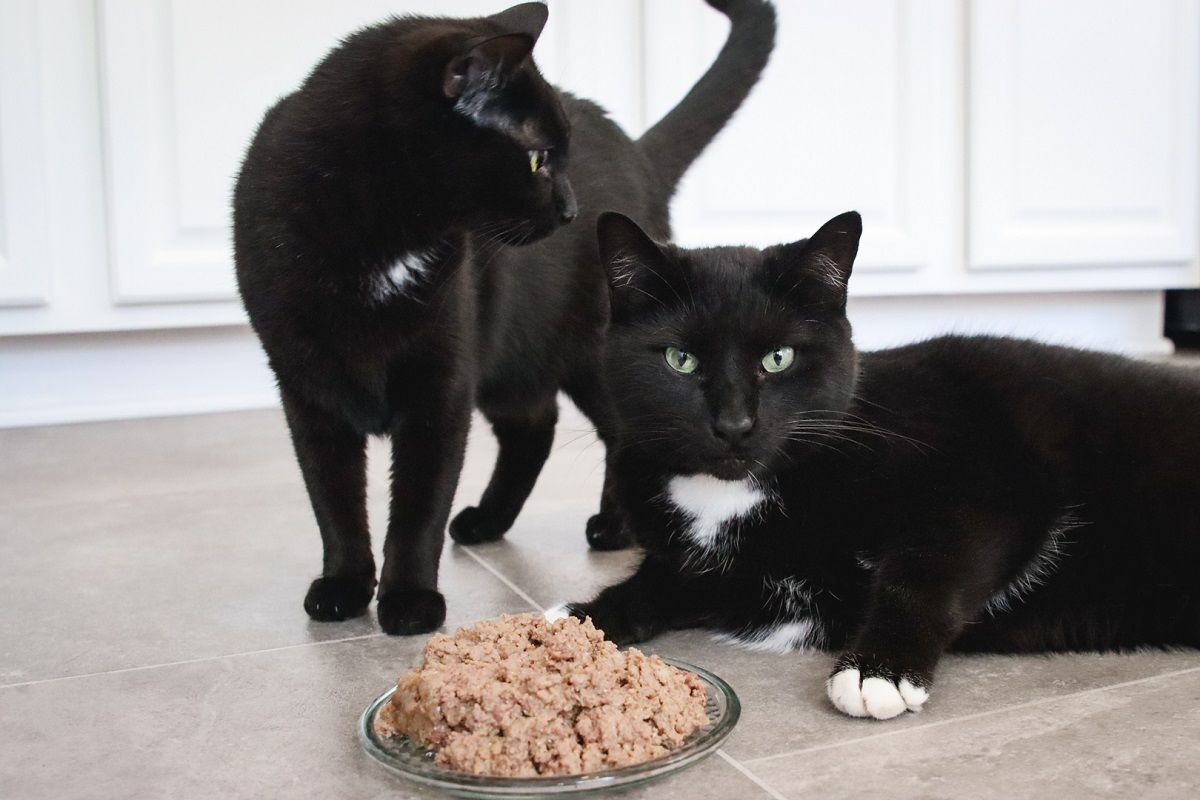
Kirsten McCarthy / Cats.com
The best low-protein cat food addresses your cat’s health needs while providing controlled levels of high-quality, highly-digestible protein. It has plenty of moisture, low phosphorus content, keeps carbohydrates to a minimum, and doesn’t contain any additives that might harm your cat.
We’ve chosen Weruva Truluxe Steak Frites as the best low-protein cat food on the market because it has controlled levels of high-quality protein, is low in carbohydrates, and contains minimal phosphorus.
At a Glance: Our Top Picks for Best Low Protein Cat Food To Buy




Want a quick look at the products reviewed in this article? In the comparison table below, we’ve highlighted some of the most important features of each product. You’ll find more detailed information about each product later in the article.
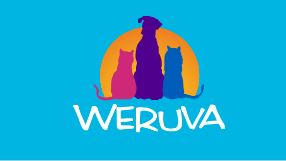
Weruva Truluxe Steak Frites with Beef & Pumpkin in Gravy Grain-Free Canned Food
- Contains highly digestible protein
- Relatively low carbohydrate content
- Free from potentially harmful additives
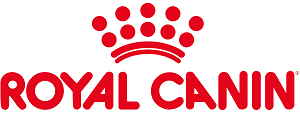
Royal Canin Veterinary Diet Renal Support D Morsels in Gravy Canned Cat Food
- Cats like the flavor and texture
- Primarily made with animal protein
- Controlled phosphorus levels for kidney disease

Hill’s Prescription Diet k/d Kidney Care with Chicken Canned Cat Food
- Formulated for cats with kidney disease
- Cats like the flavor and texture
- Fish oil as a source of anti-inflammatory omega-3s

Blue Buffalo Natural Veterinary Diet K+M Kidney + Mobility Support Grain-Free Dry Cat Food
- High-quality animal protein as the first ingredient
- Free from potentially harmful additives
- Controlled phosphorus and protein levels

Forza10 Nutraceutic Active Kidney Renal Support Diet Dry Cat Food
- Restricted protein, phosphorus, and sodium content
- Limited number of highly digestible ingredients
- Supplemented with omega-3 fatty acids

Wellness Healthy Indulgence Shreds with Chicken & Turkey in Light Sauce Grain-Free Wet Cat Food Pouches
- Primarily made from digestible animal ingredients
- Low carb content compared to many low-protein foods
- Free from potentially harmful additives

Darwin’s Intelligent Design KS Kidney Support Formula for Felines
- Formulated for cats with kidney disease
- Rich in biologically valuable animal protein
- Raw formula rich in moisture
Low-Protein Diets Are Not for Every Cat
A low-protein diet is recommended only for cats with health conditions like liver and kidney disease. Even then, that recommendation is disputed. Modern research suggests that highly digestible, low-residue food may be a more carnivore-appropriate alternative.
In this article, we’ll talk about the role of dietary protein for cats, which cats need a low-protein diet, and, finally, we’ll review the best low-protein cat foods on the market.
Why Is Protein So Important for Cats?
Cats are obligate carnivores. In nature, a cat must eat animal protein for survival. A cat might go her entire life without tasting anything that’s not an animal or part of one—and that cat wouldn’t have any nutritional deficiencies. A cat is an animal that eats other animals. Every aspect of her being is fitted to that purpose.
For cats, protein is life-giving. It supports lean muscle mass and gives them the energy they need to function. From the strength to pounce to the energy to purr, protein is vital to every process in your cat’s body.
How Much Protein Does a Cat Need?
Cats need at least 2.36 grams of protein per pound of body weight each day.
A 2013 study found that while cats in the study appeared healthy on about a quarter of that amount, they didn’t maintain lean muscle mass until they consumed at least 2.36 grams of protein for every pound of body weight. That translates to about 24 grams of protein per day for a 10-lb cat.
To give you an idea of what that means in terms of real food, Vital Essentials freeze-dried rabbit food provides about 27 grams of protein per day—slightly more than what cats would choose. Purina Cat Chow Complete offers 18.5 grams each day. Slightly less.
Speaking of what cats would choose, a 2011 study showed that when given the option to choose their own diet, over 100 cats consistently selected the food with 2.3 grams of protein per pound of body weight each day.
Remember though—cat food labels don’t give you the nutrient content in grams. They give you percentages. You can convert percentages to grams if you want, but if you’d prefer to keep it simple, look for food that’s roughly 50% protein, 38% fat, and 2% carbohydrates on a dry matter basis.
A Word About Protein Bioavailability
The guaranteed analysis on a cat food label tells you how much crude protein the product contains – it doesn’t mention how much of that protein actually fuels your cat’s body. It all comes down to digestibility and bioavailability.
Digestibility describes how much of a particular food gets absorbed in the digestive tract and enters the bloodstream. Bioavailability is a measure of how much a given nutrient can be used by the body for use and storage.
For example, if your cat’s food uses a type of protein that’s only 67% digestible, those 24 grams per day could be closer to 16 grams of usable protein. The rest is waste – waste your cat’s organs will have to work to filter out.
Protein bioavailability is a crucial part of feeding your cat well, but it’s unclear which protein sources are the most bioavailable for cats. Without a complete understanding of how cats utilize protein, it’s impossible to say which protein sources burn the cleanest.
What Happens if You Give Your Cat Too Little or Too Much Protein?
In the same 2013 study mentioned earlier, adult cats given less than 0.68 grams of protein per pound of body weight entered a negative nitrogen balance. This meant that they were losing more nitrogen than they were taking in.
While the effects of inadequate protein intake vary based on the amino acid profile of the deficient protein, you can expect to see symptoms of malnutrition and, potentially, death. Protein malnutrition may lead to hepatic lipidosis, also referred to as fatty liver disease. Amino acids are the building blocks of protein.
Most cat foods marketed for their low-protein content are around 25% to 30% protein and provide roughly 11 to 18 grams of protein each day. Depending on your individual cat’s protein requirements, this amount may lead to loss of lean muscle mass.
Does Your Cat Need Low-Protein Cat Food?
Some cats, usually those with chronic kidney disease (CKD) and other health problems, may benefit from protein restriction. Protein produces nitrogenous waste, which could place a burden on the kidneys or other organs.
It’s important to talk to your veterinarian before changing your cat’s diet, especially if he’s dealing with some kind of health problem. Dietary changes could help or make matters worse.
Cats With Kidney Disease
The jury’s still out on whether protein restriction helps or hurts cats with kidney issues, but here’s what we know.
The kidneys play a crucial role in the processing of nitrogenous wastes produced by protein digestion. Because cats with kidney disease have a reduced ability to process this waste, it builds up in their bloodstream. High blood urea nitrogen levels are a primary characteristic of kidney disease and a major part of why cats with CKD feel unwell.
To control the amount of waste in the bloodstream and ease the burden on the kidneys, cats with renal disease are traditionally given low-protein food.
This approach can help, but it can also hurt. A cat with kidney disease needs protein as much as any other cat. By restricting her protein intake, you might make your feline friend feel better than she did on her old diet, but you might also be helping the disease make her frail and skinny.
Some veterinarians suggest that instead of focusing on protein quantity alone, you need to think about protein quality. Highly-digestible protein, they say, is easier on the kidneys, tastes better, and it helps sick cats stay strong.
Lyn Thompson, BVSc says that “Clinically, we find that renal cats eating a raw food diet do well on highly digestible proteins like rabbit, chicken, hare, and possum. Too little protein in the diet can lead to excessive weight loss that can be extremely detrimental to a cat’s general health.”
Learn More About the Best Cat Food for Kidney Disease
Cats With Liver Disease
Because of the liver’s role in removing the toxic by-products of protein digestion, a diet loaded with low-quality protein can strain the dysfunctional liver. It’s recommended that cats with any type of liver disease eat food that’s rich in readily-digestible, highly bioavailable protein.
In some cases of liver disease, particularly if your cat develops hepatic encephalopathy (a brain disorder caused by liver disease), your veterinarian may recommend a low-protein diet. Traditionally, this has been considered a reliable way to reduce the amount of ammonia—a by-product of protein digestion— that the sick liver lets remain in the body.
More recent research, however, reveals that excessive ammonia is a major problem only if the cat is eating a diet with a lot of poorly-digestible protein. Feeding a low-protein diet may help cats feel better if they were previously on a bad diet, but protein restriction ultimately leads to muscle wasting and even worse health.
Even in cases when a low-protein diet is traditionally prescribed, the quality—not the quantity—of the protein appears to be the key to feeding a cat with liver disease.
Senior Cats
It’s sometimes recommended that cats eat less protein as they age. The logic here is that older cats are at an increased risk of kidney disease—it’s the most common disease in cats over age 10—and therefore their kidneys need a gentle touch.
In reality, however, senior cats aged ten and over need more protein and more calories than they did in middle age. More than at any other stage of life, senior and geriatric cats benefit from highly-digestible, high-quality protein.
Learn More About the Best Food for Senior Cats
Top 7 Best Low-Protein Cat Foods Reviewed
Because renal insufficiency is the number one reason a cat might need a low-protein diet, most of the following foods are prescription or non-prescription products for cats with kidney failure.
Best Low Protein Cat Food: Comparison Table
| Product Name | Weruva Truluxe Steak Frites with Beef & Pumpkin in Gravy Grain-Free Canned Food | Royal Canin Veterinary Diet Renal Support D Morsels in Gravy Canned Cat Food | Hill’s Prescription Diet k/d Kidney Care with Chicken Canned Cat Food | Blue Buffalo Natural Veterinary Diet K+M Kidney + Mobility Support Grain-Free Dry Cat Food | Forza10 Nutraceutic Active Kidney Renal Support Diet Dry Cat Food | Wellness Healthy Indulgence Shreds with Chicken & Turkey in Light Sauce Grain-Free Wet Cat Food Pouches | Darwin’s Intelligent Design KS Kidney Support Formula for Felines |
| Primary Protein | Beef | Chicken | Chicken | Chicken | Hydrolyzed Fish Protein | Chicken | Chicken |
| Guaranteed Protein (%) | 10 | 6.5 | 6 | 26 | 26 | 4 | 9.6 |
| Ash (%) | 0.48 | N/A | 1.6 | N/A | 6.8 | 1.67 | N/A |
| Calcium (%) | N/A | N/A | 0.25 | 0.9 | 1.4 | 0.25 | N/A |
| Phosphorus (%) | 0.1 | 0.15 | 0.14 | 0.7 | 0.8 | 0.16 | N/A |
| Calories Per Ounce | 21 | 33 | 33 | 110 | 107 | 19 | N/A |
| Cost Per Day | $6.29 per day | $5.51 per day | $3.57 per day | $0.83 per day | $1.39 per day | $6.99 per day | $0.52 per day |
High-Protein Food Is Ideal for Almost All Cats
Before you decide to cut back on your cat’s protein intake, speak with your veterinarian and consider your alternatives.
Even in the case of kidney disease, for which a low-protein diet is almost always prescribed, results seem to be better with a species-appropriate amount of high-quality animal protein than with a low-protein diet.
Before you give your cat low-protein food, consider a diet rich in high-quality protein instead. Our article on the overall best cat food may help you decide.
Relevant Content:
- Kidney Failure In Cats: Symptoms, Diagnosis, & Treatment
- What’s The Best Food For Cats with Kidney Disease?
- Fatty Liver Disease In Cats: Causes, Symptoms, And Treatment
Frequently Asked Questions
Is low-protein cat food healthy for cats?
Generally speaking, no. Cats are obligate carnivores that require a high-protein diet for optimal health. While veterinarians may recommend protein restriction for certain health problems like kidney and liver disease, research suggests high protein quality is more beneficial than low protein quantity.
What cats need low-protein cat food?
Cats with liver disease and kidney disease are most frequently prescribed low-protein cat food, though recent research suggests that may not be the best option to support liver and kidney function. All cats require plenty of digestible, highly bioavailable protein in their diet.
Do I need a prescription for low-protein cat food?
Not necessarily. You may be able to find non-prescription options with lower-than-average protein content but the lowest protein cat foods on the market tend to be veterinary formulas designed for kidney disease which may require a prescription.
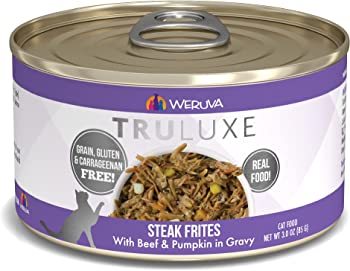
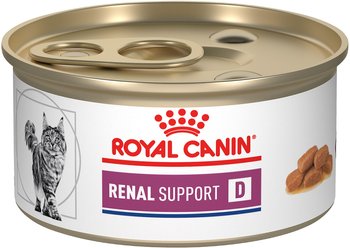

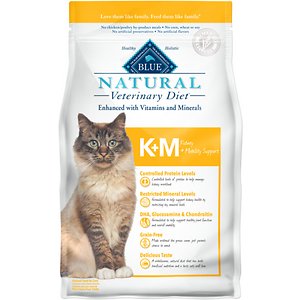

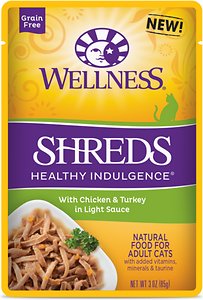
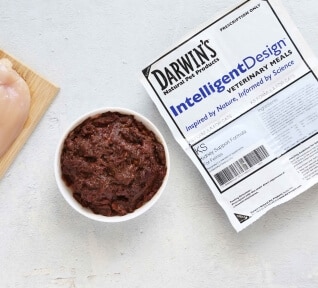




Hi There!
Out 16 cat had a health crisis. We were told she had a stroke and is now on Atenolol for life now. We were told to put her on a renal diet because of her high creatinine and nitrogen levels. She is a super fussy eater. And we finally found the Blue label Wilderness cat food that she loves. We bought the Royal Canines Renal cat food, and she won’t eat it. So we are mixing the renal diet 50/50 with her old food just to get her to eat right now. Can you please suggest anything for us? She is not keen on beef or turkey.
Hi Vivian! Sorry to hear about the struggles with your cat. If mixing the two foods is working, that may be the best option to make sure she gets the calories and nutrients she needs. Another option is to try adding a wet food topper or some warm broth to make the renal food more appealing. Let us know if that works!
I cannot get any vet to write a prescription for Blue Buffalo Natural Veterinary Diet K+M Kidney + Mobility Support Grain-Free Dry Cat Food, 7-lb bag. I was able to get it for my kidney stressed cat (cashier was new by and did not ask for prescription). I mixed it with the Royal Canin Renal and Hills Renal and they loved it. I think they needed the extra mobility factor that was in it. Now they go without it.
Hmm, that’s a difficult situation! If your cat is on a renal diet, I would consider adding an omega-3 fatty acid supplement to it. You don’t want to change to a non-kidney diet, but the added omegas should help to reduce inflammation and support joint health. You can add it to all of your cat’s food.
Hello Mallory,
My cat also has kidney disease and I have been searching for cat food that meets the requirement of low phosphorus, low protein with high quality protein. He refuses to eat Hills Rx k/d. I tried Merrill Duck recipe he ate it 1x so I bought more, but now sure if that is a low protein high quality protein. I am now asking the vet for Cerenia to control the vomiting but trying to find food is a nightmare because I don’t know what to look for on the label. I saw you recommend Weruva Steak Frites as low protein with high quality protein but I am wondering if their other brands Pretty in Pink (salmon) and Quick and Quirky (chicken and turkey), Cat on the Wok etc. would be low protein high quality.?
look forward to our response.
Instead of any of these, I would now recommend their Wx low-phosphorus food. They recently launched this line, and I think it’s the best meaty low-phosphorus diet out there. Again, it’s not a prescription diet and doesn’t check all the kidney care boxes, but it should help.
Hi, Mallory. Thank you for the information and helpful breakdown of your choices’ nutrition. I’ve referred back to your article(s) several times looking for a food my cat, Max, will enjoy. He was diagnosed with a liver shunt last fall, and after thousands of dollars saving his life, I’m trying to maintain it. He’s on daily meds to control the excess ammonia, and he’s always been a finicky eater. His thyroid was whacked out, too, so he ate anything not eating him for a while, including the Hill’s k/d, which he won’t touch now. He is more of a fan of Royal Canin, but he’d prefer to sneak our other cat’s dry food most of the time. He will only pate in wet; anything else he just licks off the gravy (like the Weruva above). I’ve researched until my head spins. My vet is very “he can only eat Hill’s k/d” so there are no “outside the box” ideas on that front. I’ve been toying with making him food but I’m at a loss on how to find protein with high bioavailability. Any suggestions? Thank you so much again for your article.
Hello Lori, apologies for the late reply! This thread includes some recommendations from someone who is, I believe, in a similar position to you. Aside from the recommendations here, I think an ideal would be a diet specially formulated for your cat by a board-certified veterinary nutritionist. The needs of a cat with liver shunts are different than those with kidney disease, so I can’t recommend one of our lower-protein homemade kidney diets. You may be able to get some good advice from the vet moderators in the Cats.com Community here.
Thank you for this helpful ful article.
My 15 year old cat has some kidney disease. Shes been on wellness pate canned food for 13 years. Turkey salmon or chicken herring. They seem to be about 10% protein. Is that considered a food digest or protein level for her to continue eating?
Hi Emilie, I’d be happy to help answer this question. Animal proteins like turkey, chicken, and fish are generally very digestible for cats. When you say 10% protein, do you mean the as-fed amount listed on the Guaranteed Analysis? Assuming a moisture content of 78%, that would make the dry matter protein content around 45% which is very good for cats. Given your cat’s kidney disease, however, it’s always a good idea to consult your vet to assess your cat’s specific protein requirements.
Thank you Mallory for a very informative read on Low Protein Cat Food.
My cat (Mason) has just been diagnosed with Kidney Complaint. Told by Vet to change his diet, easier said than done. It’s a minefield out there.
I have thrown away so much food that he won’t touch, ie Pate, won’t touch Purina Pro. He eats ordinary Purina.
Then found Royal Canin & Hills, got this in a Taster Pack, hooray he likes it. Am now awaiting for above to be delivered, hopefully tomorrow (Monday).
I will try the Chicken & Turkey Shreds you recommend.
Your article made so much sense.
Thank you from Mason & Denise 🐾x
Thank you for the kind comment! I would also recommend reading my vet-reviewed article on the best cat food for kidney disease, which goes into more detail on the other factors that make a food a good choice for cats with kidney disease. Hope this helps as well! Wishing you and Mason all the best.